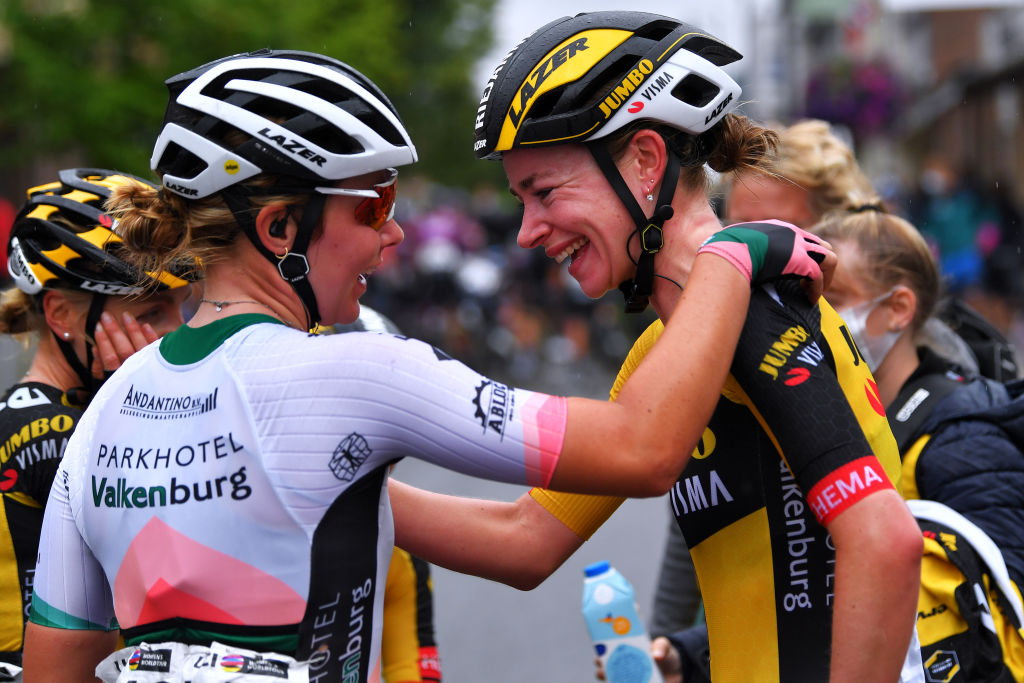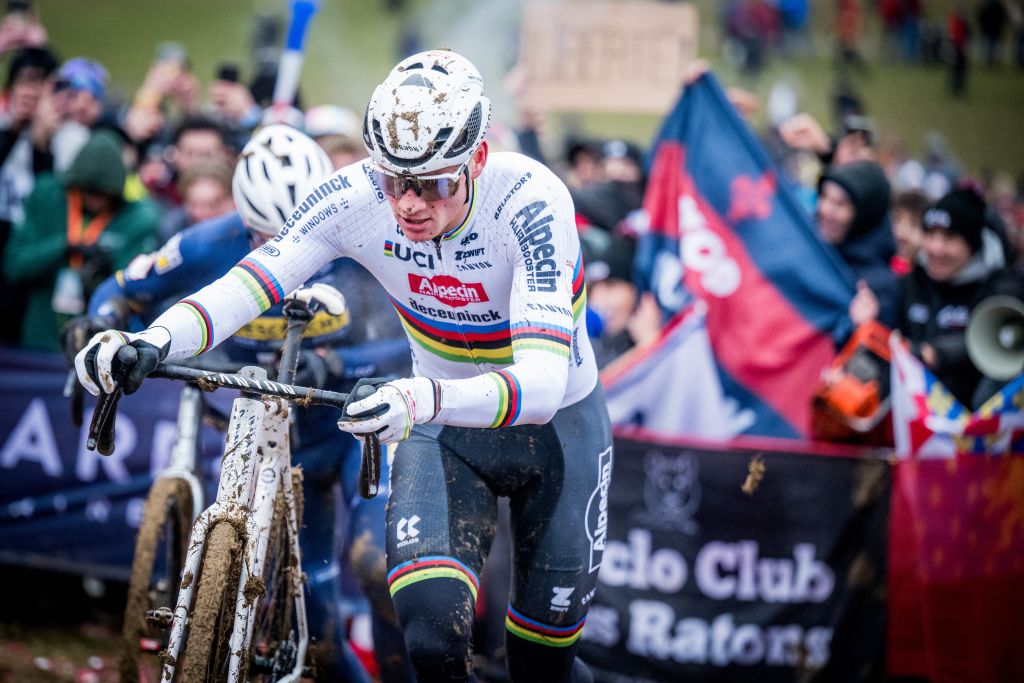Déjà-vu as sprinters' teams miscalculate again in Ladies Tour of Norway
Solo attacker spoils sprinters' plans for the second day in a row

Many who watched stage 2 of the Ladies Tour of Norway will have been left with a feeling of déjà-vu: like Kristen Faulkner (Team TIBCO-Silicon Valley Bank) on stage 1, solo attacker Riejanne Markus (Team Jumbo-Visma) held off the peloton with a gutsy ride on the last 23 kilometres, crossing the finish line just metres ahead of the sprinters. And on both days, the runner-up came from Team DSM: Susanne Andersen on stage 1, Coryn Rivera on stage 2.
"Today was a pretty big disappointment for us after getting second yesterday and doing it again today. We are a bit upset and frustrated, but I think we did well to try to salvage the day; it just wasn't enough in the end. On a positive note, the legs are good so hopefully, we can learn from today and take it with us to the next two stages of the race," said Rivera after the stage.
There were some differences between Faulkner's ride and that of Markus. The US rider had been in the breakaway for 100 kilometres, the Dutch woman only went on the attack in the final 50 kilometres of stage 2, bridging to the front duo of Aude Biannic (Movistar Team) and Audrey Cordon-Ragot (Trek-Segafredo) with a strong effort. Furthermore, the chasing peloton was briefly disrupted by a crash with two kilometres to go on stage 1, while there were no crashes in the final on stage 2.
However, there were also several parallels for the stages. Both Faulkner and Markus attacked from the breakaway about 20 kilometres from the finish at a time when their break mates were fading and the peloton was close to reeling them in. In Faulkner's case, the peloton had reduced the gap to 35 seconds, and in Markus' case, it had been brought down to only 13 seconds. But both times the peloton relaxed once there was only one rider up ahead and let the time gap go out to a minute again.
Faulkner only arrived on the professional cycling scene in September 2020 as the former venture capitalist was a lateral entrant to the sport, but in the 11 months since, she has proven her strength. Markus started doing UCI races as an 18-year-old in 2013 and signed with a UCI team the following season, making a name for herself as a dependable domestique and exceptional rouleur with good time trial skills, as evidenced by her 2019 European and World titles in the Mixed Relay TTT with the Dutch national team.
Team DSM sports director Huub Duijn explained that his team was left chasing alone in the final. "The team of the GC leader had spent a lot of energy earlier and other than Wilma [Olausson], who did an impressive job riding at the front, there was no other team really committed to the chase anymore," he said.
Olausson was indeed left doing most of the work until the 8.2-kilometre circuit around the finishing town of Mysen when the whole DSM squad was called to action. Liane Lippert went to the front of the peloton on an uncategorised climb and quickly shaved 10 seconds off Markus' advantage. Even stage 2 runner-up Andersen was put to work, and the high pace in the last five kilometres stretched out and split the peloton as gaps appeared down the line. However, it was too late to catch Markus who passed under the flamme rouge with a 20-second gap and held a two-second advantage to the line.
The latest race content, interviews, features, reviews and expert buying guides, direct to your inbox!
The fact that Team DSM had the strongest sprinter on both stages may explain the decision of the other sprinters' teams such as Liv Racing and Valcar-Travel & Service, who had both been working earlier in the stage, not to contribute to the chase in the end. In addition, both teams had more than half of their riders involved in crashes on stage 1.
But for the same reason, the decision to have only Olausson do the chase work, with the rest of the DSM riders coming to her aid too late, appears curious. Markus was still relatively fresh as she had fewer kilometres in the attack than Faulkner the day before, and in that situation, committing two or three riders to the chase instead of one could have saved the team the 'what if' feeling it was left with after the stage.
Lukas Knöfler started working in cycling communications in 2013 and has seen the inside of the scene from many angles. Having worked as press officer for teams and races and written for several online and print publications, he has been Cyclingnews’ Women’s WorldTour correspondent since 2018.
